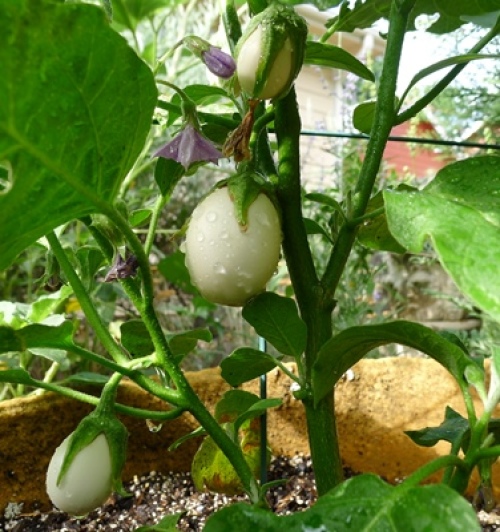
The eggplants we grow in our vegetable gardens took hundreds of years to reach us. Food historians have traced eggplants to their origins in either India or China. Some records show that eggplants were cultivated as early as 50 BCE.
Travelers carried the fruit west to Europe, then eventually it arrived in America, thanks to Thomas Jefferson bringing seeds back from France.
While we enjoy eggplants of different shapes, colors and sizes, the early plants bore fruit that was considered ornamental instead of edible. Those plants flowered and grew small white and oval fruits that looked just like chicken eggs.
British gardeners named these “egg-plants” for their attractive appearance on plants they entered in competitions. The egg plants gained attention from the crowds at exhibitions, but it took courage to harvest and eat the fruits.
Because eggplants are classified in the nightshade family (Solanaceae), people were afraid the fruits were poisonous. Fortunately some brave gardeners gave them a try and lived to tell others about it.
I love this history of one of my favorite fruits, so I decided to grow some heirloom eggplants in my garden this season.
I bought a packet of imported Italian egg plant seeds at a garden show in spring and ended up with three special eggplants. The Italian name of this tree-of-eggs plants is Pianta Delle Uova; the Spanish name is Planta de Huevos.
This variety is planted and cared for just like other eggplants, but because they’re smaller in size, they may be easier to grow. Each plant is loaded with purple blossoms and most are now setting the round white fruits.
When I cut the first fruit from the eggplant, I had to marvel at how closely it resembles an egg. To serve, I think I’ll crack them open and fry them in a pan.


















Comments
Log in or create an account to post a comment.
Sign up Log in